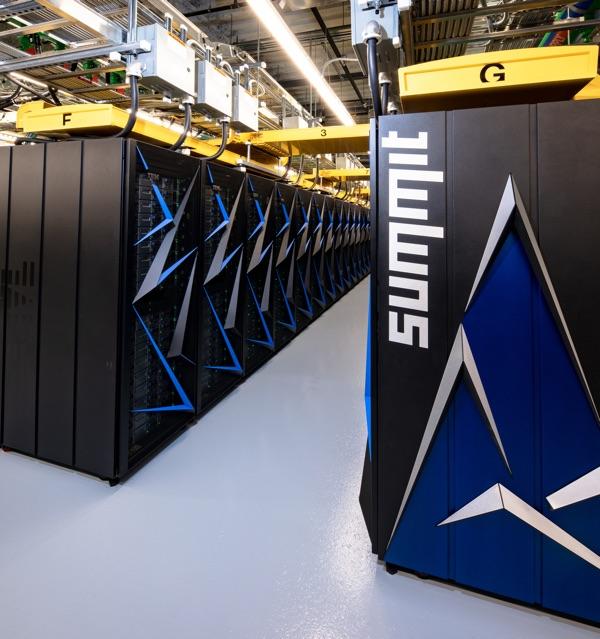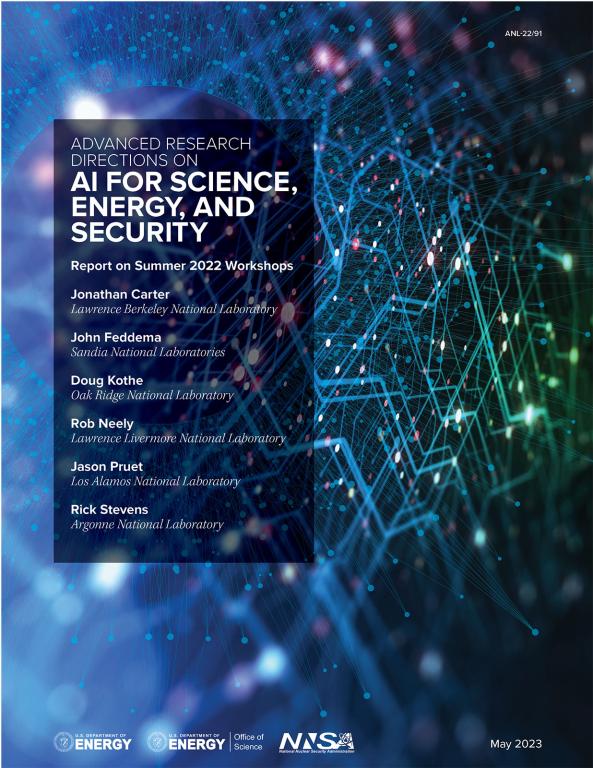
The advent of artificial intelligence (AI) is rapidly revolutionizing society and the way in which researchers tackle some of science’s most complex problems. Exponential increases in data volume and computing capabilities have altered the R&D landscape for both science and industry and created a unique opportunity to expedite understanding and vastly improve our world.
Oak Ridge National Laboratory (ORNL) currently applies AI to a wide variety of science and national security applications including materials science, nuclear science, satellite imagery, cyber security, urban dynamics, and health sciences. But the Lab is now looking to harness its resources in theory, experiment, modeling and simulation, and big data to integrate AI across research domains.
To this end, ORNL has made a significant internal research investment toward an AI Initiative aimed at advances across the AI and analytics spectra. The initiative harnesses the Lab’s unique suite of expertise, compute capabilities, and user facilities to accelerate scientific breakthroughs and enhance national security.
Expertise
ORNL is building on a foundation that has enabled two R&D 100 Awards and 10 patents for AI R&D—innovation that allows researchers to accelerate data analytics, create novel workflows, and expedite outcomes via modeling and simulation.
The Lab is a recognized leader in algorithm and application development and currently has working research groups dedicated to neuromorphic computing and machine learning—a series of strategic hires is further expanding upon this expertise. ORNL shares numerous joint faculty with the University of Tennessee, and the two institutions have recently launched the Bredesen Center Data Science and Engineering Program, designed to educate future data scientists in solving a range of problems that stand to benefit from the application of AI.

Infrastructure
The Lab’s Leadership Computing Facility has launched Summit, the world’s most powerful AI supercomputer. Such massive computing resources are critical to the development of AI models eventually deployed at the individual researcher and consumer levels. ORNL also offers data resources and analytics for AI capabilities in its Compute and Data Environment for Science (CADES). Examples include NVIDIA’s DGX-1 and DGX-2 appliances and other GPU-enabled resources used by a variety of programs. Such systems are engineered to rapidly enable deep learning, a type of AI that uses neural networks to recognize features and relationships within datasets and generate outputs that otherwise may remain hidden.
Data
ORNL hosts some of the world’s most advanced scientific facilities and instruments, including the National Transportation Research Center, the Spallation Neutron Source, and the Urban Dynamics Institute. These assets generate the large and unique scientific datasets perfectly suited for AI analysis. Such datasets are critical for advancing the ability of AI to tackle grand challenge science problems and enhance national security in both the cyber and physical arenas.
Applications and Mission Need
ORNL’s mission of leadership in science and national security requires advanced data analytics and the ability to translate understanding into practical applications and real-world outcomes.
The Lab’s expertise in algorithm development and its rich history of algorithm deployment in scientific applications, along with its unique data and computing infrastructure, make ORNL the ideal setting in which to realize the potential of AI in missions of national and international importance.
Read the AI for Science, Energy, and Security report.


